Shangri-la assets lost forever after town blaze
Updated: 2014-01-14 09:22
(China Daily)
|
||||||||
 |
|
The ancient town of Dukezong in Yunnan province lies devastated on Monday, three days after a blaze engulfed many areas. Qu Mingfei / for China Daily |
Infrastructure changes take their toll, report He Na and Yang Yang in Beijing and Hu Yongqi in Yunnan province.
Irreparable damage to ancient architecture and traditional culture was caused by a fire that raged in an ancient Tibetan town in Yunnan province at the weekend, according to experts.
The blaze in Dukezong, founded 1,300 years ago and a noted tourist attraction, destroyed 343 of the 1,084 houses in a town known for its cobbled streets and well-preserved wooden houses.
The Shangri-la county government said the fire started when a hotel owner accidentally set curtains alight early on Saturday. Investigations are continuing.
Although there were no reports of casualties, more than 2,600 people were evacuated from their homes.
More than 2,000 firefighters, soldiers, police and volunteers were involved in the rescue operation as firefighters fought for more than 10 hours to bring the blaze under control.
Although the Diqing Tibetan autonomous prefecture Red Army Long March Museum and Diqing Museum survived, at least half of Dukezong was destroyed in the blaze.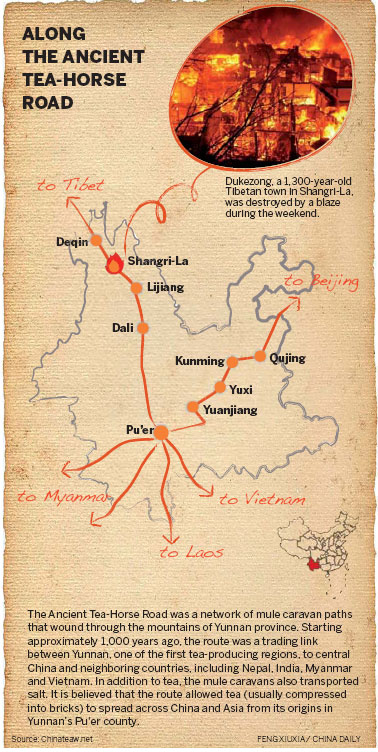
Cultural loss
One of the best-preserved old houses, a provincial-level key cultural heritage site and a major tourist attraction, was reduced to ashes and a number of other ancient sites were also destroyed. In addition, the blaze consumed important cultural relics, precious Tibetan thangka and other pieces of ethnic art.
"The value of Dukezong lies in its architecture and functional integrity. The fire destroyed the pattern of the town that was laid down in ancient times and has dealt a fatal blow to research in the region and to traditional culture," said Li Gang, the director of the Diqing Tibetan autonomous prefecture historical relics preservation agency.
Li, born and raised in Dukezong, visited the town on Sunday. The scene reduced him to tears.
"Everything was in a pitiful state. There was nothing left except broken, blackened walls. The once-prosperous town center is totally ruined and almost unrecognizable. Nothing remains of the magnificent buildings. The water that had been used to extinguish the flames lay frozen on the ground. I could see smoke coming from collapsed houses. The town looked as though it had been the target of an air raid," he said.
Residents said firefighters arrived at the scene quickly, but there was little they could do because the narrow streets prevented access for the fire engines.
Li said changes made to the original infrastructure to accommodate the vast numbers of tourists the town attracts and insufficient fire safety procedures and equipment were among the root causes of the devastation. For example, the town's only water tank has a capacity of just 800 metric tons, far from sufficient to tackle a fire of such intensity.
From a distance, Dukezong looks like an amazing ancient town, but seen up close it's a business area that sports bars, nightclubs, hotels and small shops. Electric cables hang everywhere.
Tourism has been a double-edged sword for this ancient settlement. The influx of visitors has raised the local standard of living, but the town has also seen many changes in recent years and some locals said they hardly recognize it.

 Cristiano Ronaldo wins FIFA best player award
Cristiano Ronaldo wins FIFA best player award
 Xuelong carries on mission after breaking from floes
Xuelong carries on mission after breaking from floes
 Beijing and Sofia vow new initiatives
Beijing and Sofia vow new initiatives
 71st Golden Globe Awards
71st Golden Globe Awards
 Bangkok unrest hurts major projects and tourism industry
Bangkok unrest hurts major projects and tourism industry
 No pant for cold subway ride
No pant for cold subway ride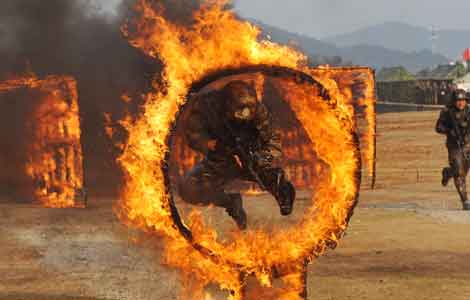
 Tough army training turns boys into men
Tough army training turns boys into men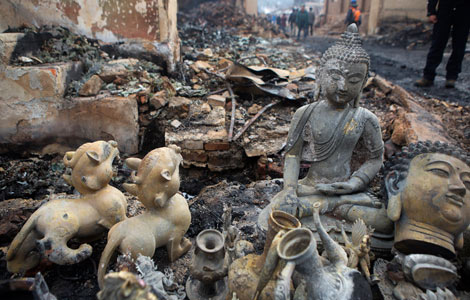
 Blaze prompts concern for ancient buildings
Blaze prompts concern for ancient buildings
Most Viewed
Editor's Picks
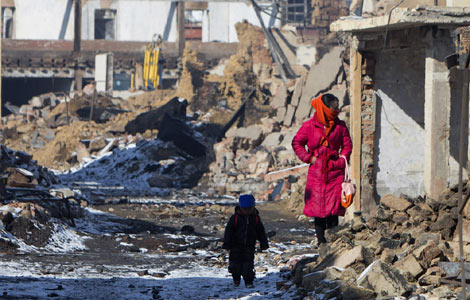
|
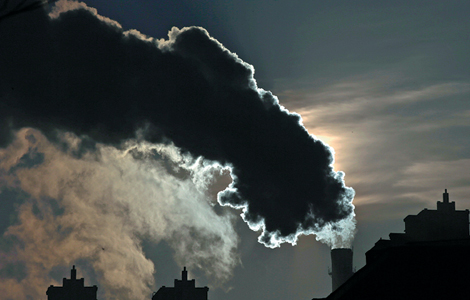
|

|

|

|

|
Today's Top News
Jackson's family bid for new trial denied
Newspapers must change or die
Abe’s brother to explain shrine visit to US
Protests cannot end Thai deadlock: observers
Mercy killing still a hot button issue
China builds army 'with peace in mind'
UN plea made on war victims
Li: China's tech innovation a priority
US Weekly

|

|






